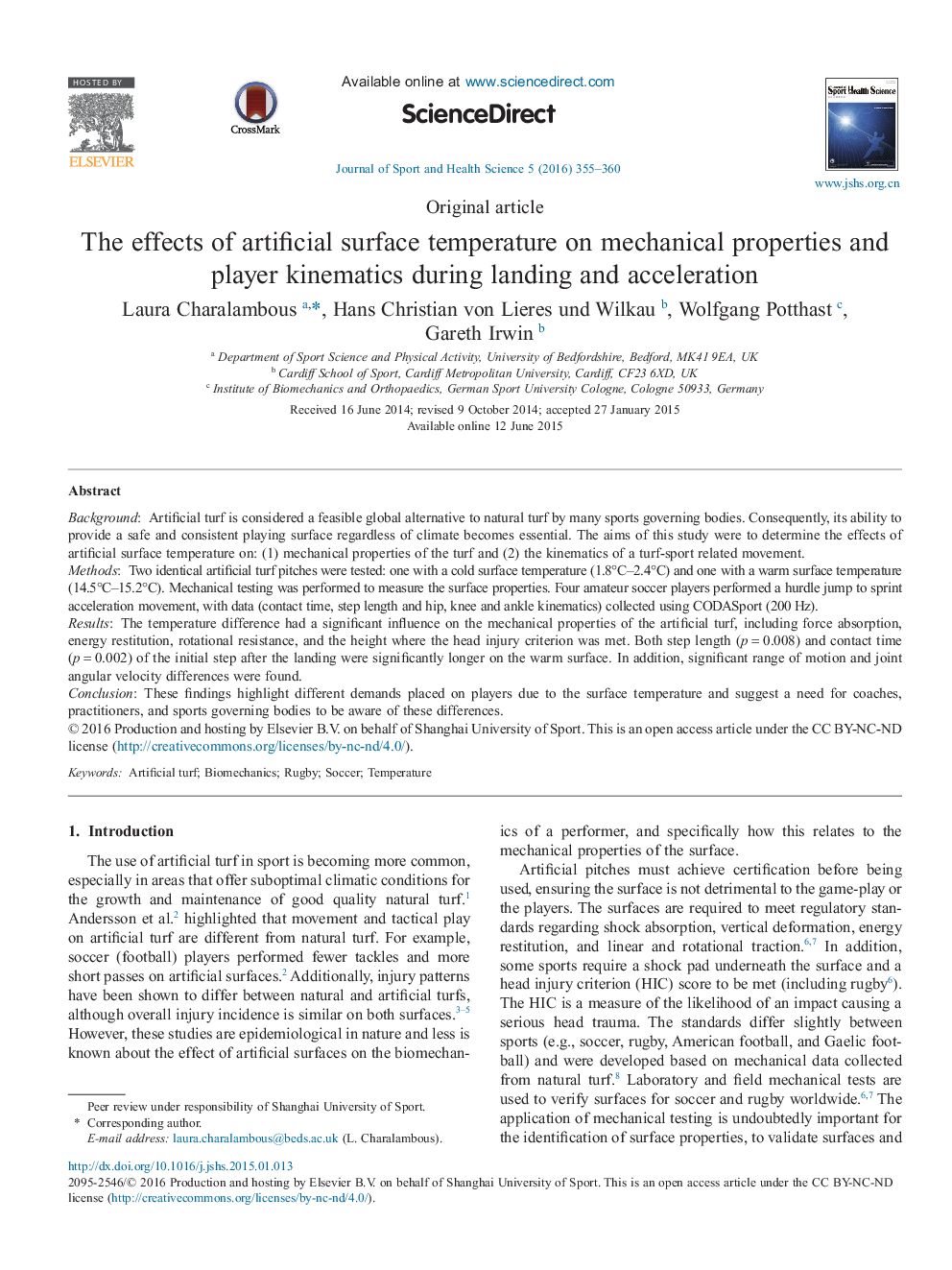| Article ID | Journal | Published Year | Pages | File Type |
|---|---|---|---|---|
| 5122117 | Journal of Sport and Health Science | 2016 | 6 Pages |
BackgroundArtificial turf is considered a feasible global alternative to natural turf by many sports governing bodies. Consequently, its ability to provide a safe and consistent playing surface regardless of climate becomes essential. The aims of this study were to determine the effects of artificial surface temperature on: (1) mechanical properties of the turf and (2) the kinematics of a turf-sport related movement.MethodsTwo identical artificial turf pitches were tested: one with a cold surface temperature (1.8°C-2.4°C) and one with a warm surface temperature (14.5°C-15.2°C). Mechanical testing was performed to measure the surface properties. Four amateur soccer players performed a hurdle jump to sprint acceleration movement, with data (contact time, step length and hip, knee and ankle kinematics) collected using CODASport (200âHz).ResultsThe temperature difference had a significant influence on the mechanical properties of the artificial turf, including force absorption, energy restitution, rotational resistance, and the height where the head injury criterion was met. Both step length (pâ=â0.008) and contact time (pâ=â0.002) of the initial step after the landing were significantly longer on the warm surface. In addition, significant range of motion and joint angular velocity differences were found.ConclusionThese findings highlight different demands placed on players due to the surface temperature and suggest a need for coaches, practitioners, and sports governing bodies to be aware of these differences.
